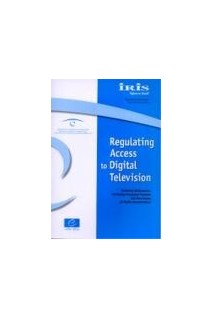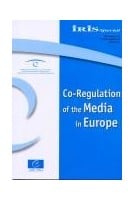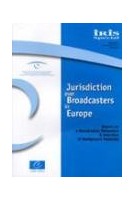- Online only



How should modern technical devices used to control access to television be regulated?* Can we, should we, and do we want to regulate them anyway?* Are they already covered by current regulation?The questions, which are related to the digital technology used in television, are very different from those connected with traditional media concentration. Whenever the particular characteristics of digital television are discussed, numerous new variants on the concentration of media market power begin to emerge. They are mainly the result of controls over technical functions, such as application programming interfaces, electronic programme guides, portals, bundling or multiplexing, to name just a few. Today, anyone who understands the relevant technology as well as the terminology can choose from numerous interesting models and combinations in order to gain competitive advantages in the media market. Are these advantages legitimate, or even desirable, or do they infringe competition rules? More importantly, do they threaten diversity of opinion in the media? Every single aspect of digital television is affected by the question of access control: the compilation and preparation of content to be transported;the transmission and reception of content (encrypted or not), including the necessary technical devices; content bundling; programme selection aids; and, finally, all the technical precautions that enable the viewer to actually receive content. The more of these elements that are offered by the same service provider, or in other words, the more the market structures are vertically integrated, the more serious the problem of access control becomes.This IRIS Special consists of three sections: The first section provides a brief overview of the topic. The second part contains a written version of the various lectures, which either deal with the technical, legal and economic dimension of the topic or describe possible approaches to regulation. The articles discuss whether these issues are covered by the EC Access Directive, or whether they fall under media concentration law. However, other possible solutions are also conceivable and are discussed, including the application of European competition law or a laisser-faire approach such as that used in the USA. The arguments for and against these approaches and how things appear in practice are discussed in this section. The third section contains background information on the aforementioned EC Directive and on the organisation of the workshop.





How should modern technical devices used to control access to television be regulated?* Can we, should we, and do we want to regulate them anyway?* Are they already covered by current regulation?The questions, which are related to the digital technology used in television, are very different from those connected with traditional media concentration. Whenever the particular characteristics of digital television are discussed, numerous new variants on the concentration of media market power begin to emerge. They are mainly the result of controls over technical functions, such as application programming interfaces, electronic programme guides, portals, bundling or multiplexing, to name just a few. Today, anyone who understands the relevant technology as well as the terminology can choose from numerous interesting models and combinations in order to gain competitive advantages in the media market. Are these advantages legitimate, or even desirable, or do they infringe competition rules? More importantly, do they threaten diversity of opinion in the media? Every single aspect of digital television is affected by the question of access control: the compilation and preparation of content to be transported;the transmission and reception of content (encrypted or not), including the necessary technical devices; content bundling; programme selection aids; and, finally, all the technical precautions that enable the viewer to actually receive content. The more of these elements that are offered by the same service provider, or in other words, the more the market structures are vertically integrated, the more serious the problem of access control becomes.This IRIS Special consists of three sections: The first section provides a brief overview of the topic. The second part contains a written version of the various lectures, which either deal with the technical, legal and economic dimension of the topic or describe possible approaches to regulation. The articles discuss whether these issues are covered by the EC Access Directive, or whether they fall under media concentration law. However, other possible solutions are also conceivable and are discussed, including the application of European competition law or a laisser-faire approach such as that used in the USA. The arguments for and against these approaches and how things appear in practice are discussed in this section. The third section contains background information on the aforementioned EC Directive and on the organisation of the workshop.
Please note that in accordance with our terms & conditions, PDF/epubs may only be purchased by private individuals.
